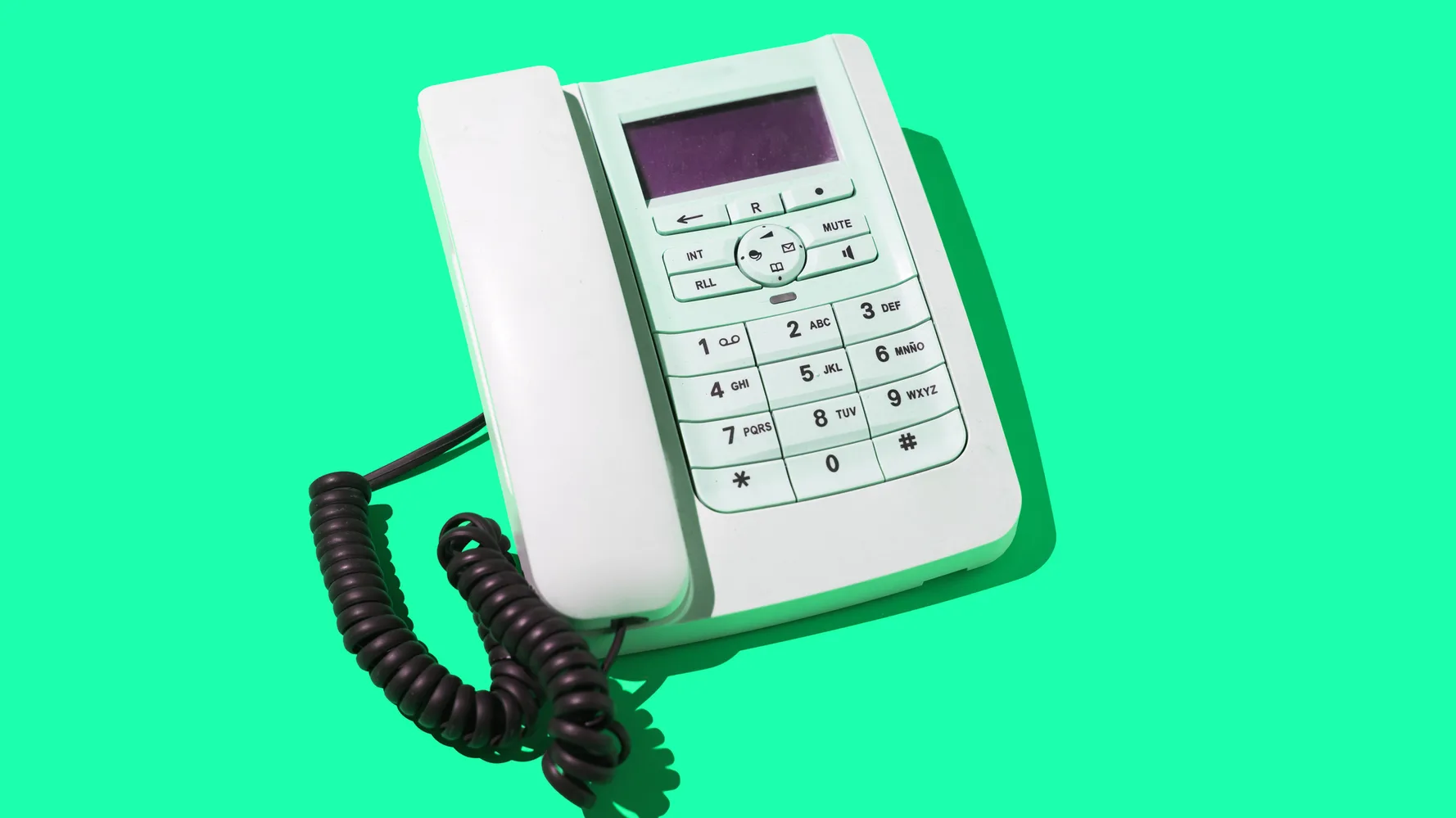By Natasha Hinde
Copyright huffingtonpost

As the anti-smartphone movement begins to snowball among schools and parents alike, some families are going fully retro by getting landlines again so their kids can keep in touch.
What’s a landline?
For those who are too young to remember, landlines are phones that aren’t mobile. Instead, they’re connected to the phone system by wires (nowadays most landlines work using WiFi).
For years, landlines were delivered through an analogue network however this is being phased out and replaced with digital technology – also called ‘Voice over Internet Protocol’ (VoIP). Nowadays you can package a landline deal in with your broadband, which might save you some money, too.
With landline phones, typically you have a handset with number buttons, so you can call someone else’s phone – and that’s about it.
There are no games, there’s no social media, messaging, emojis or the ability to take pictures or videos. It’s a very basic way to communicate – and some parents, many of whom grew up with landlines at home themselves, are opting in.
Why are parents bringing back landlines?
I don’t know many families with a static home phone – and I’m sure I’m not the only one. Mobiles have reigned supreme for years.
But in some households, especially in the US, landlines are cropping up on hallway tables and kitchen counters once more.
Caron Morse, who is based in Portland, Maine, refused to give her child a smartphone when she asked for one. Instead, she got a landline.
There are a handful of benefits to these devices – the main one being, they’re a very simple alternative to smartphones. Kids can still call their mates and keep in touch but without all the added distractions smartphones bring.
I often think about the headteacher who ended up banning smartphones in his school after a pupil received 9,000 Whatsapp messages overnight. There’s none of that with a landline. Perhaps the odd inconvenient phone call from your child’s pal during dinnertime (“uh, can you tell them you’ll call back later?!”), but that’s about it.
Another major benefit is that if there’s an emergency, a child can easily grab the landline and call 999, rather than having to faff about searching for someone else’s mobile phone and struggling to unlock it.
Some suggest having landlines helps improve kids’ listening skills. It likely boosts independence, too, as kids learn to arrange their own playdates.
There are, of course, drawbacks. Kids might feel left out if they can’t join the Whatsapp group or the social media sites all their mates use. Some children – from marginalised groups especially – might need that support a lot more than others.
You also need to try and get other parents to buy in if you want children to be able to communicate freely.
For Morse, she knew it would be pretty annoying if her children were calling their friends’ parents all the time so she asked if they’d consider getting landlines, too. According to the Atlantic, several bought in immediately and now, 15-20 families are using them.
The idea is becoming so popular that phone companies are cropping up catering to parents and kids, specifically. Tin Can is one of them – launched by a group of dads in the US who “couldn’t find a phone we actually wanted to give our kids”.
The landline phones work via WiFi. You pay for a monthly plan, but can call other Tin Can phones for free. It’s got extra elements of safety, too – only approved contacts can put calls through, for instance.
Unfortunately it’s not available in the UK (yet), but there are plenty of digital home phones available already via providers like EE and BT.
Having written a fair bit on the impact of smartphones on children – and having heard from lots of parents and experts with differing views on them – I have to say, I feel swayed by the landline argument.
I know kids can’t be held off smartphones forever – and I don’t think they should. But with children as young as three being handed these devices, and the negative impacts of this wide-ranging, I do think that landlines for under-13s could be a fair starting point.
If phone providers like EE are telling parents not to give under-11s smartphones, yet kids are desperate to communicate with each other and gain that little bit of independence, a landline seems like a happy medium.
So, the question now is: where do I put one?



